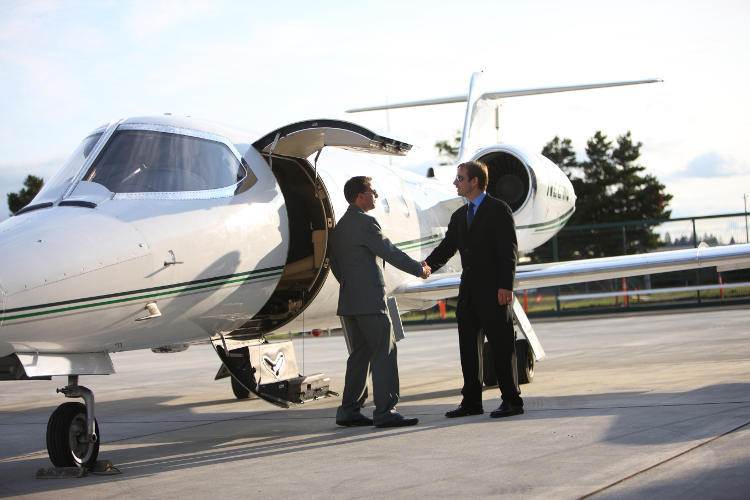The National Business Aviation Association (NBAA) conducted research last year to find “How companies use their private planes.” The findings of the survey are based on interviews with both business aircraft pilots and passengers. The results provide insights into business aviation, including the types of aircraft owned and the reasons for which the aircraft are used.
The survey, conducted by The Harris Poll, consisted of interviews with 202 aviation professionals (pilots, directors of flight operations, etc.) and with 276 passengers. The key details are as follows:
Which Companies Use Private Planes?
- Smaller companies are more likely to be using business aircraft; 70% of flights were linked to companies with 500 or fewer employees. Those with more than 5,000 employees accounted for just 17% of flights.
- Companies that own or operate an aircraft are likely to have just one. Sixty-two percent of businesses owned one, compared with 38% owning more than one.

What Type of Plane Are They Using?
- Of these aircraft, 45% are heavy or medium jets. The majority are smaller – light jets (19%), turboprops (17%), or other small aircraft (20%).
Why Are They Using Them?
We've explored some of the reasons people prefer private jet travel over commercial airlines in an earlier article. The survey results add a few extra insights.
- Flexibility is cited as the primary reason to use private business aircraft as opposed to commercial flights. Fifty-two percent noted that regular commercial airlines could not accommodate their scheduling needs.
- Owning a private plane means these companies can go to many locations that are not serviced by commercial airlines. In past 6 months, 32% of respondents had flown to an airport that never had scheduled airline service. 42% had flown to an airport with infrequent or no scheduled airline service. This means they can fly into airports that are closer to their ultimate destination, rather than relying on large, crowded commercial airports. In many cases, these airports are too small to accommodate a large commercial jet.
- Eleven percent of the respondents cited industrial or personal security purposes as the main reason for using business aircraft.
- An additional feature that makes private aircraft more attractive to the business user is their flexibility with multi-leg trips. On average, forty two percent of flights involved multiple stops. For a small number (13%) of users, over 75% of their flights involved multiple legs. This is so much easier in a private aircraft, when you can avoid all the security lines, hassles and fixed timetables of commercial airline services.
- Company employees find that using a private aircraft allows for more productive business time in-flight. Of those surveyed, only 42% said they were able to get work done during a commercial flight. However, 63% said they felt effective and productive on private flights. There may be a number of reasons for this including comfort, privacy and fewer interruptions from other passengers.
Further Info
- Among those surveyed, 65% of flights were on company-operated aircraft, as opposed to 29% on commercial airlines. The use of private charters, jet cards and fractional services were much lower.
- International flights are increasing. Currently, 83% of the business aircraft flights are domestic, but the study found that within the last five years there has been a 23% increase in the number of international flights taken. This is no doubt linked to the increasing number of larger jets being used.

